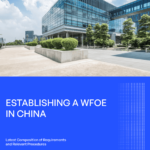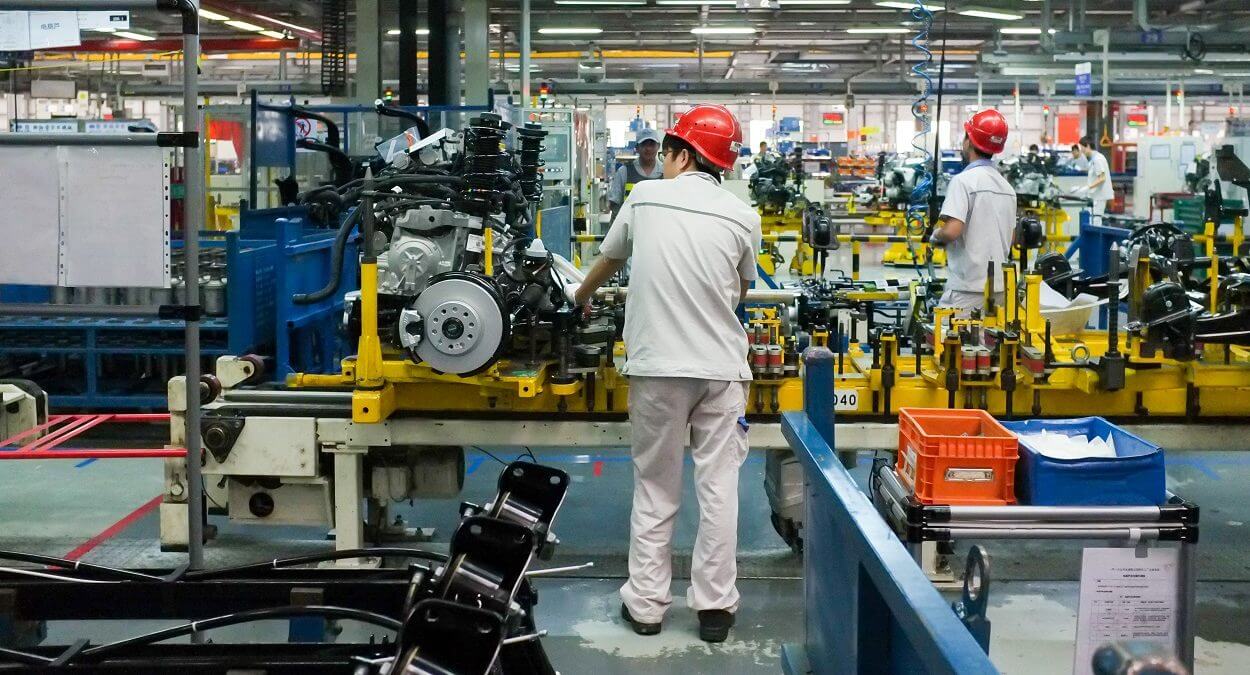The initial rise of the Chinese economy began more than four decades ago, and one of the main drivers for the country’s unprecedented growth is the establishment of Special Economic Zones (SEZs) in China. Established as a way to experiment and promote economic reform, it opened the country to new possibilities and laid the foundations for a strong market that remains competitive even today.
Here we explore how foreign companies expanding or starting a business in China can take advantage of Special Economic Zones.

Register a WFOE (Wholly Foreign-Owned Enterprise) in China
Our consultants are experts in company registration throughout China. Having assisted SMEs and multinationals...
Read moreWhat is a Special Economic Zone in China?
A Special Economic Zone (SEZ) is a commercial region with unique characteristics that allow for a greater viability for conducting business. Special Economic Zones are geographically delimited and physically secured areas, managed by a single administration and subject to its own regulations. Organizations operating within the zone enjoy various benefits, often including a separate customs area designated for international transactions, tax incentives and access to infrustructure.
In China, SEZs cover larger geographical areas compared with other types of economic zones. There are seven major SEZs in China located in the cities of Shenzhen, Xiamen, Hainan, Zhuhai, Shantou, as well as city districts including the Pudong New Area of Shanghai, and the Binhai New Area in Tianjin .
The first four SEZs were established in the cities of Shenzhen, Zhuhai, and Shantou in Guangdong Province and Xiamen in Fujian Province during the 1980s.
These economic zones were established to enhance economic development and support in the country’s recovery from the decade-long Cultural Revolution. These SEZs enjoyed special financial, trade, and investment privileges, as well as additional benefits from the practice of open economic policies.
There are now several types of SEZs in China focusing on a range of industries, including high-tech industrial development zones (HIDZs), free trade zones (FTZs), and export-processing zones (EPZs) among others.
High-Tech Industrial Development Zones
The main objective behind HIDZs is to utilize the technological capacity of enterprises to create high-tech products, which can expedite the commercialization of the special zones. After decades of development, HIDZs have become the pillar of industrial improvements and scientific innovations in the country.
Free Trade Zones
FTZs were established for China to experiment with the opening of its country to foreign investments before participating the World Trade Organization. These zones are designed to boost foreign trade, export processing, and logistics through the bypassing of China’s customs regulations.
Export-Processing Zones
EPZs aim to improve foreign exchange earnings and further develop export-oriented industries. EPZs are characteristically similar to FTZs except that they are solely built for managing export processing.
How SEZs Help China
SEZs served as China’s testing ground to see how attractive the country was to foreign trade and investments. The economic move proved to be a success, and China later further opened its market by creating more variants of SEZs.
The first SEZs later became models for the rest of the country. By the early 1990s, the concept of opening the Chinese market to foreign investments through SEZs became so successful that the government decided to expand towards the entire coastal region, capital cities, and autonomous regions.
Special economic zones have since contributed significantly to the country’s GDP, given its influence on employment and exports. In 2021, SEZs contributed 22% to the national GDP, 45% of the total foreign investments entering the country, and 60% of exports. Additionally, they created an estimated 30 million jobs for local employees.
Disadvantages of SEZs
While China’s SEZs are viewed as a major success story from outside the country, there are also notable disadvantages regarding their establishment.
Land loss
SEZs require the acquisition of large areas of land at very low prices. Since they have been permitted by the local and/or national government, the acquisition process is susceptible to abuse, with buyers getting large and, at times, unfair discounts.
Loss of livelihood and unemployment
In the case of SEZs built on agricultural land, farmers often sacrifice their livelihoods and are forced to relocate. In many instances, they are not skilled enough to work on the newly built SEZs, pressuring them to seek other employment opportunities elsewhere.
Benefits of SEZs
Chinese SEZs are designed to attract foreign investors by offering huge tax incentives, more relaxed policies, and legislative protection to ensure that they can maximize their business operations. Here are some of the advantages that foreign investors can get from SEZs:
Tax Incentives
- Income tax is reduced to 15%, compared to the percentages imposed in other areas in China.
- Reduction or elimination of corporate tax if the company becomes profitable after a series of losses. Corporate taxes can be reduced for up to 5 years, depending on the circumstances.
- Certain industries have local tax exemptions.
- Foreign-invested enterprises situated in open coastal cities, SEZs, and specific urban areas can enjoy as much as a 24% reduction in their corporate income tax.
For more on tax rates read our full article on tax rates in China.
Economic Policies
- Duty-free export on certain items.
- Lower import tariffs.
Foreign company establishment
- Foreign companies are allowed to set up a local subsidiary through a joint venture with a local company.
Although some policies differ per area, they all are favorable to companies that are based or operate in the SEZs.
Locations of Special Economic Zones in China
Here is a list of the SEZs in China, including Free-Trade Zones, state-level new areas, and open coastal cities:
State-Level New Areas
- Changsha City, Hunan Province
- Zhoushan City, Zhejiang Province
- Changchun City, Jilin Province
- Lanzhou City, Gansu Province
- Shanghai City
- Baoding City, Hebei Province
- Nanjing City, Jiangsu Province
- Jiujiang City and Nanchang City, Jiangxi Province
- Chengdu City and Meishan City, Sichuan Province
- Guizhou City and Anshun City, Guizhou Province
- Dalian City, Liaoning Province
- Tsingtao (Qingdao) City, Shandong Province
- Fuzhou City, Fujian Province
- Chongqing City
- Xi’an City and Xianyang (Hsienyang) City, Shaanxi Province
- Tianjin City
- Guangzhou City, Guangdong Province
- Kunming City, Yunnan Province
- Harbin City, Heilongjiang Province
Special Economic Zones
- Shenzhen
- Hainan
- Kashgar
- Zhuhai
- Xiamen
- Khorgas
- Swatow (or Shantou)
Pilot Free Trade Zones
- Chongqing
- Tianjin
- Sichuan
- Liaoning
- Shanghai
- Zhejiang
- Fujian
- Guangdong
- Henan
- Hubei
Coastal Open Cities
- Qinhuangdao
- Weihai
- Yingkou City
- Lianyungang
- Guangzhou
- Tianjin
- Shanghai
- Zhanjiang
- Qingdao
- Fuzhou
- Wenzhou
- Yantai
- Ningbo
- Dalian
- North Sea
- Nantong
FDIs and their Contribution to the Growth of SEZ’s
Foreign Direct Investment (FDI) plays a vital part in the prosperity of SEZs. Aside from attracting capital, FDIs bring new technologies and management skills that promote learning in the local vicinity.
Manufacturing capacities also expand due to the influx of FDIs, generating more jobs for local Chinese employees.
What makes SEZs continuously attractive to FDIs are the cheap labor and good infrastructure available in the special zones. The open door policies and generous incentives allowed money and labor to flow into China from the diaspora.
Here are the Factors that Attract FDIs to Chinese SEZs:
- Reduced duties on imports
- Streamlined administrative control
- Greater flexibility in employment policies
- Preferential fees for land or facility use
- Concessionary tax breaks, rates, and exemptions
- Free or low-rent business accommodation
- Favorable arrangements on project ownership, size, location, and duration
Overall, the attractiveness of the policies makes China’s SEZs highly viable for businesses that want to tap into the local market and take advantage of the numerous benefits available to them.
Final Thoughts
While over the past few years China continues to enjoy the benefits that its SEZs supply to the local market, they are still encouraging more businesses to enter into and participate in the SEZ’s. The tax breaks, low rents, reduced import duties, and employment flexibility that businesses in the economic zones can benefit from are commensurate with the country’s strong economic growth and stability. SEZs continue to attract foreign investors, leading to increased job creation and employment opportunities.
If you are interested in establishing a business in China’s SEZ, you will need to navigate the complex requirements that the local and national governments enforce. Additionally, hiring local employees can be very challenging, since different regions in China implement differing policies. As such, you will need the help of a partner that is well acquainted with the governing employment laws in China.
As a high quality service provider, MSA has over a decade of experience supporting foreign enterprises in China. We are here to help you in this area and make sure your business remains compliant with local and national employment regulations. Contact us for more information on our services in the areas of accounting, financial advisory and corporate services.





